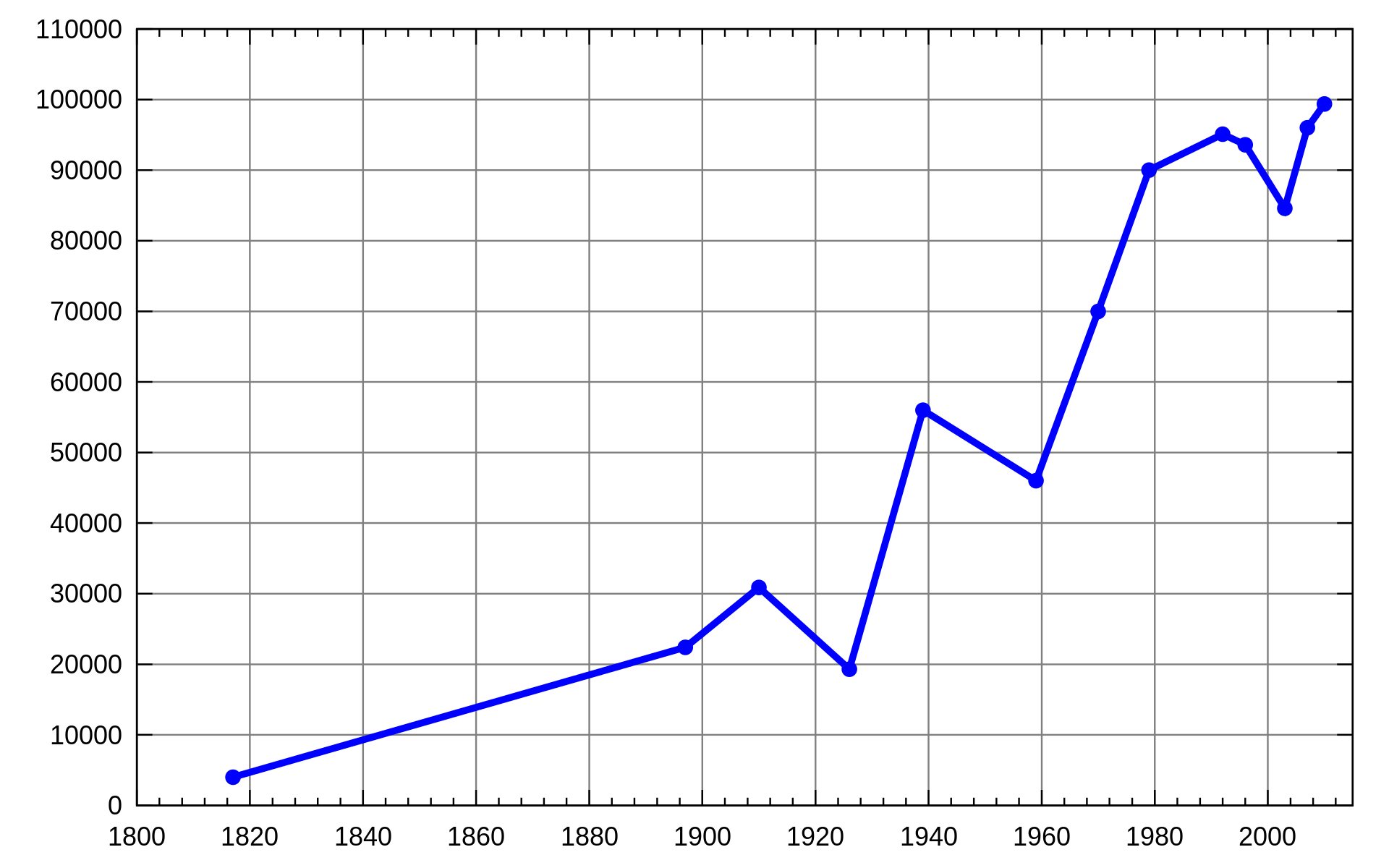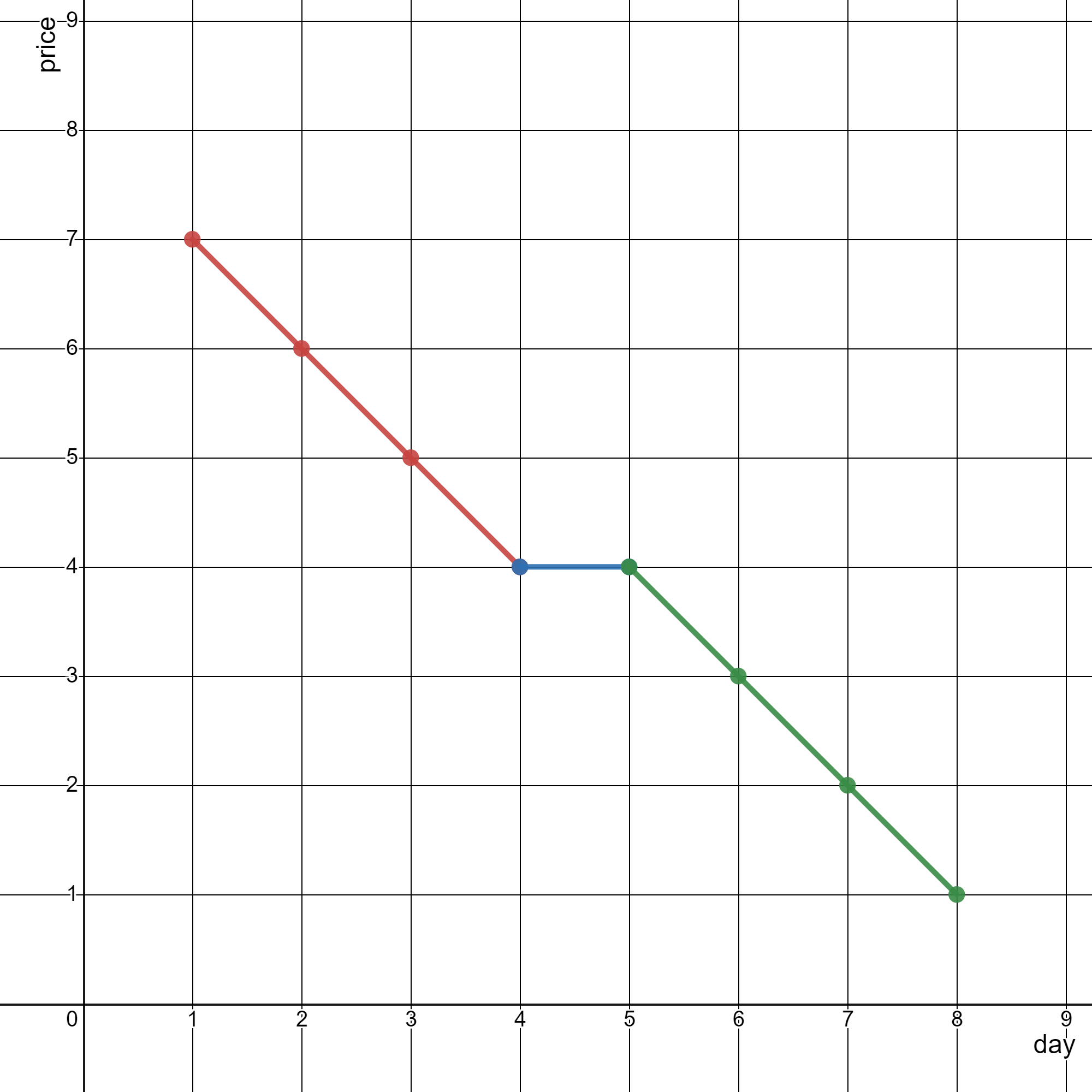Description
You are given a 2D integer array stockPrices where stockPrices[i] = [dayi, pricei] indicates the price of the stock on day dayi is pricei. A line chart is created from the array by plotting the points on an XY plane with the X-axis representing the day and the Y-axis representing the price and connecting adjacent points. One such example is shown below:

Return the minimum number of lines needed to represent the line chart.
Example 1:

Input: stockPrices = [[1,7],[2,6],[3,5],[4,4],[5,4],[6,3],[7,2],[8,1]] Output: 3 Explanation: The diagram above represents the input, with the X-axis representing the day and Y-axis representing the price. The following 3 lines can be drawn to represent the line chart:
- Line 1 (in red) from (1,7) to (4,4) passing through (1,7), (2,6), (3,5), and (4,4).
- Line 2 (in blue) from (4,4) to (5,4).
- Line 3 (in green) from (5,4) to (8,1) passing through (5,4), (6,3), (7,2), and (8,1). It can be shown that it is not possible to represent the line chart using less than 3 lines.
Example 2:

Input: stockPrices = [[3,4],[1,2],[7,8],[2,3]] Output: 1 Explanation: As shown in the diagram above, the line chart can be represented with a single line.
Constraints:
1 <= stockPrices.length <= 105stockPrices[i].length == 21 <= dayi, pricei <= 109- All
dayiare distinct.
Code
Time Complexity: , Space Complexity:
仔細想想,因為 stock price 是按照天數在走的,所以只能夠順著天數排,因此 sort 後直接看哪些天有轉折就行了。
要注意的點是,在計算斜率的時候,避免除法,因為浮點數計算會有精確度的問題。
class Solution {
public:
int minimumLines(vector<vector<int>>& A) {
int n = A.size(), res = n - 1;
sort(begin(A), end(A));
for (int i = 1; i < n - 1; ++i)
if (1LL * (A[i][0] - A[i-1][0]) * (A[i+1][1] - A[i][1]) == 1LL * (A[i+1][0] - A[i][0]) * (A[i][1] - A[i-1][1]))
res--;
return res;
}
};